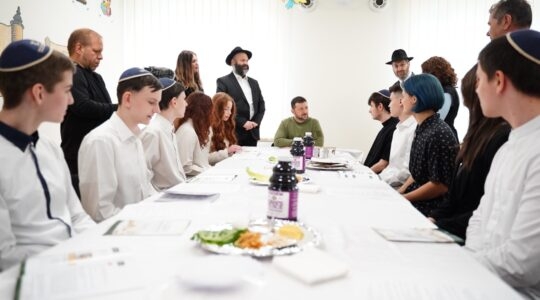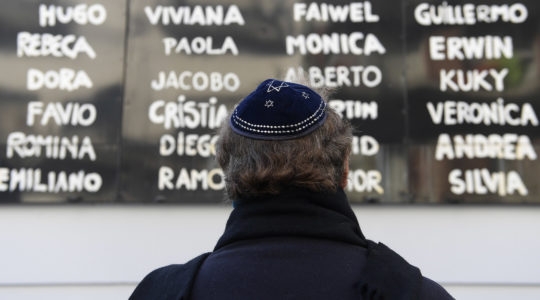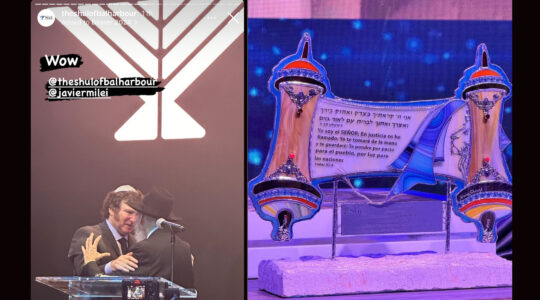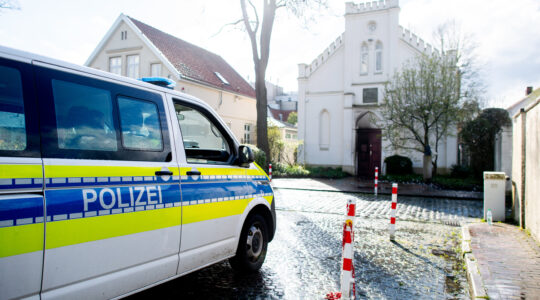MOSCOW, Feb. 12 (JTA) — Founded in 1993 as Russia’s first post-Soviet Jewish religious umbrella group, KEROOR in recent years has lost most of its influence and members to the Chabad-led Federation of Jewish Communities, or FEOR. KEROOR, an acronym for the Congress of Jewish Religious Organizations and Communities of Russia, once was the only umbrella group for Jewish congregations in Russia and included all denominations — Orthodox, Chabad and Reform, known here as Progressive or Modern Judaism. In 1996, the growing Chabad Lubavitch organization for all intents and purposes split from KEROOR and created FEOR, led by Italian-born Rabbi Berel Lazar. FEOR is backed by Israeli diamond mogul Lev Leviev and favored by the Kremlin administration. After years of bitter competition between the two groups, few in the community doubt that KEROOR — which now unites non-Chasidic Orthodox congregations — has lost the battlefield to its more affluent and politically connected rival. As one KEROOR official put it to JTA, to compare the groups is like comparing “a gas station with British Petroleum.” For several years, Chabad and non-Chabad rabbis sat together on the board of the Russian Jewish Congress, a foundation formed in 1996 by media mogul Vladimir Goussinsky that quickly became the main voice and chief address in the country’s Jewish community. Four years later, KEROOR and FEOR started their struggle over community representation and political influence, a process triggered by the Kremlin, which forced Goussinsky to emigrate from Russia. It paved the way for FEOR to elect Lazar to the post of Russia’s chief rabbi, a post also held by Rabbi Adolf Shayevich of KEROOR. Shayevich refused to step down and is still regarded as chief rabbi by the 69 member congregations in KEROOR. Since FEOR, mainly funded by Leviev and helped by federal authorities, became the main umbrella group in Russia, KEROOR has been plagued by its association with Goussinsky. KEROOR has found it difficult to raise funds domestically and attract a major donor from abroad that could come close to Leviev’s support to FEOR. Optimism rose two years ago when the Soviet-born Israeli billionaire Arkady Gaydamak, a generous donor to FEOR, became KEROOR’s president and main backer. In an interview with JTA shortly after being elected KEROOR president in spring 2005, Gaydamak said that under his leadership the organization’s budget would rise from $1 million to $5 million a year. That promise has not fully materialized. Gaydamak and other KEROOR donors have spent large sums on the reconstruction of the group’s most prized property and visible symbol, the Moscow Choral Synagogue. The synagogue held high-profile celebrations last year to mark its 100th anniversary. But KEROOR’s operational budget, which supports its religious and community programs, still stands at about $1 million, sources within the organization indicated. The group has not made its budgetary figures public. Insufficient funding to local congregations — most of which receive a few hundred dollars a month from KEROOR in Moscow — caused discontent among some local congregational leaders who had expected increased support under Gaydamak. For its part, FEOR is believed to spend more than $60 million on its work in the former Soviet Union. No separate figure for its Russian budget has been made public. Observers familiar with the situation said Gaydamak joined KEROOR because he became dissatisfied with his role in FEOR, where he was secondary to Leviev. Gaydamak denies this assessment, saying he joined KEROOR because he saw great potential in the organization. KEROOR says it has organizations in nearly 60 cities across Russia, but only 10 member congregations have synagogue buildings. Others conduct services in Jewish charity centers or use rented space. Chabad employs 152 rabbis permanently living in Russia with their families. KEROOR supports two dozen rabbis, with only 10 working in the provinces. KEROOR activists in the provinces say they value the group as an alternative to Lubavitch, whose reading of Jewish tradition some find difficult to accept. Others believe the group — although an Orthodox organization — represents a more liberal approach to Judaism that better suits their congregants, most of whom are not observant. Many have a strong sympathy for Shayevich, who unlike most key figures in Chabad in Russia is a native Russian speaker and stands as a symbol of Russian Judaism. But those dissatisfied with KEROOR’s limited role in the community said the group’s ambitions have never been properly formulated and are mainly centered on the Choral Synagogue and Shayevich. There are indications that following his 70th birthday this year, Shayevich may retire. Without Shayevich, the future of KEROOR appears to be even more questionable, given the absence of leaders of his stature among non-Chasidic Orthodox rabbis in Russia.





